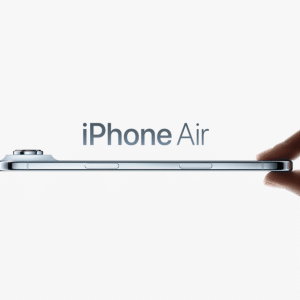App Tracking Transparency has led to a nearly 55% drop in tracking opt-in rates in the United States, as detailed in a research paper by Frankfurt-based professors and researchers. Globally, opt-in rates for App Tracking started at 16% in May 2021 but rose to 25% by mid-2022, with gaming apps achieving slightly higher consent at 30%, per Adjust’s data. Users are selective, often approving App Tracking Transparency requests for trusted apps while denying others. The feature’s straightforward yes/no prompt—or the option to disable it entirely via iOS settings—has made it easy for users to limit data collection.
The impact of App Tracking Transparency on ad-driven platforms like Meta has been significant. Meta, which owns Facebook and Instagram, reported an estimated $13 billion revenue loss by 2022 due to App Tracking Transparency restrictions. Advertisers’ complaints triggered regulatory scrutiny, with France fining Apple $162 million in March 2025, claiming the implementation favored Apple’s apps. However, Apple counters that its apps adhere to stricter internal privacy controls, and the European Union previously upheld App Tracking Transparency as a valid privacy measure.
Why It Matters for Users
App Tracking Transparency empowers the average iPhone user by reducing unwanted data sharing across apps and websites. Before App Tracking Transparency, third-party apps could track user activity freely, feeding data to advertisers for targeted ads. Now, a clear prompt asks, “Allow this app to track your activity across other apps and websites?” Most users decline, leading to a more private mobile experience. Some developers, however, have raised in-app purchase prices by 40% on iOS since 2021 to offset lost ad revenue, a direct consequence of App Tracking Transparency’s restrictions.
Compared to Android, where Google’s efforts to limit cross-app tracking began in 2022 but have progressed slowly, App Tracking Transparency has positioned iOS as the leader in mobile privacy. Users benefit from tangible control: they decide which apps access their data, and a single toggle in Settings can block all tracking requests.
Industry Pushback and Adaptation
App Tracking Transparency faced resistance from companies like Meta, which labeled it a “harmful policy” that disrupted small businesses reliant on targeted ads. Snapchat and Twitter reported better-than-expected opt-in rates, with Snapchat citing 95% success in early workarounds, though these have since faced scrutiny. In April 2025, Brazil’s antitrust regulator, Cade, launched an investigation, spurred by Meta’s claims that Apple’s apps bypass App Tracking Transparency rules. Apple disputes this, emphasizing its rigorous privacy standards.
Despite challenges, developers have adapted. Snap, for instance, saw revenue growth and reached 293 million daily active users by mid-2021, despite App Tracking Transparency. Others have shifted to in-app purchases or subscriptions to recover losses. The industry is moving toward privacy-focused advertising, with contextual ads—based on app content rather than user behavior—gaining ground.
What’s Next for Privacy?
As Apple prepares for WWDC 2025 and the expected iOS 26 (a rebranded iOS 19), App Tracking remains a cornerstone of its privacy strategy. Regulatory battles in Brazil and France underscore the tension between user privacy and industry profits. Early bugs, like the grayed-out toggle in iOS 14.5.1, have been fixed, and App Tracking Transparency continues to set a standard for competitors. Its legacy is clear: users have a stronger voice in how their data is used, redefining expectations for mobile ecosystems worldwide.















